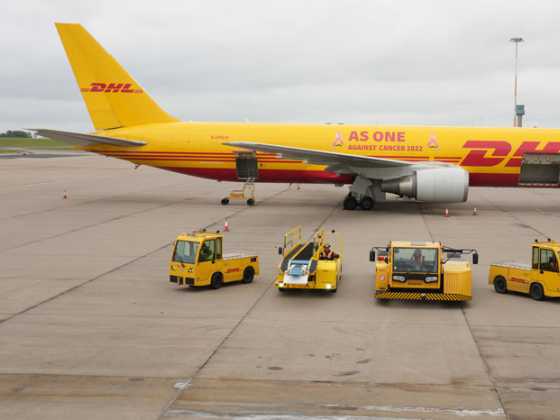Leasing panel of experts: Road to Zero

The government’s Road to Zero strategy included bold visions for 50-70 per cent of new car sales to be ultra-low emission by 2030. With the leasing and rental sector such large purchasers of new vehicles, how can the industry help the government meet its aims? Our leasing experts discuss
Rental and leasing companies spent around £30bn on buying over 1.8million vehicles in 2017, according to a report by Oxford Economics for the BVRLA.
With this massive spending power, the leasing and rental industry will play a crucial role in delivering the aims outlined in the government’s Road to Zero strategy for 50-70 per cent of new car sales to be ultra-low emission by 2030.
“With circa 50 per cent of new vehicle purchases being fleet vehicles, the leasing sector clearly has a significant role to play in achieving these goals,” says Rob Mills from Daimler Fleet Management. “Through consultation with customers we can influence the market to optimise their fleet vehicle policies to work towards the Road to Zero strategy, but equally as important, to do so not at the detriment of their own mobility objectives or balance sheets.”
Rob continues: “We are encouraging companies to revisit their policies and to see where low emission vehicles could fit in. We accept at the moment that electric vehicles will not be suitable to every driver, but it is important to recognise where they could play a role and ultimately save the company money in the long run.”
Mark Gallagher from Grovesnor Leasing agrees that the advice and consultation a leasing firm can give about EVs and ULEVs can greatly speed up adoption. He said: “The leasing sector’s role in achieving this goal is vital, because companies operating vehicle fleets turn to us for advice, information and guidance on ULEVs and EVs.
“The counsel we give them can determine their vehicle policies and choices for the next three to four years, which is why leasing companies are so pivotal in influencing EV and ULEV decisions, and its for this reason why we launched our 0Zone service last year to deliver the very best advice in our sector.”
The BVRLA, the UK trade body representing over 900 members from the leasing and rental sector, has recently launched a ‘Plug-in Pledge’ for its members, with the aim of growing their plug-in vehicle fleet size from 50,000 today to 720,000 by 2025.
The BVRLA says the vehicle rental and leasing companies will be buying 300,000 plug-in vehicles per year by this point. This represents an increase in the industry’s share of annual new plug-in hybrid and pure electric vehicle registrations from 36 per cent to 60 per cent.
Commenting on this, Stuart Thomas from the AA says: “The key to helping the leasing sector to achieve these goals is to generate a realistic picture of whole life end user costs to allow fleets to plan ahead for this transition. Increasing incentives for fleets to drive adoption rates and providing greater support, advice and reassurance on infrastructural capacity is also critical.”
Barriers to adoption
Fleets were recognised in the government’s Road to Zero strategy, which included a commitment to ‘take steps to accelerate the adoption of fuel-efficient motoring by company car drivers, businesses operating fleets, and private motorists’. But what are the biggest barriers standing in the way of fleets purchasing zero emission vehicles and how should these be addressed?
Rob Mills cites the limited public charging infrastructure and high upfront costs as the two main barriers. He says: “Even with the available grants, the perception is that EVs can be expensive. With technology in this field moving so fast and technology becoming obsolete so quickly, we are seeing this reflected in residual values. This in turn pushes up rentals and makes some models unobtainable even to those customers who would like to move to an EV.”
Rob believes that while the limited EV infrastructure is a big issue at the moment, especially for field based company car drivers with long distances to cover, ‘range anxiety’ should eventually become a thing of the past. This is due to the advancements that manufacturers are making, with some EVs achieving 300 miles, together with the expanding charging network. Rob comments: “For the majority of company car drivers whose average daily commutes are below 100 miles its perhaps about re-educating them to know where to find the nearest charge point instead of the nearest petrol station.”
Mark Gallagher says that range anxiety often dampens the enthusiasm some customers have about introducing ULEV and EVs to their fleet, as well as uncertainty of taxation post 2021 and whether or not they will be fit for purpose.
Mark adds: “When faced with these concerns, it’s further complicated for us to advise when none of us have the necessary information on the tax brackets post 2021, or how the current CO2 bands will accommodate WLTP.”
Stuart Thomas echoes this thought, saying: “Greater clarity is needed from the government on the long-term tax implications of the shift to alternative fuels for fleets – surety is needed to enable fleets to plan ahead. OEMs must also continue to innovate and develop as the market develops to ensure EVs can incorporate all user requirements, particularly in the case of light commercial vehicles (LCVs).”
Stuart believes that more incentives, such as vehicle scrappage schemes, are vital to encourage motorists and businesses to make the switch from petrol to low-emission vehicles. He adds: “This shift is a pressing issue for fleets ahead of the widespread introduction of Ultra-Low Emission Zones across the UK’s cities and must be responded to with plans to move to alternative fuels.”
Workplace charging
The Road to Zero strategy included plans to increase the Workplace Charging Scheme, raising the grant level from £300 per socket to 75 per cent of the purchase and installation costs of a chargepoint, capped at a maximum of £500 per socket.
But there are other things that should be considered as well as costs before installing charge points?
Rob Mills comments: “Electric vehicles do not run on ‘free fuel’. Businesses will need to consider the impact on their utility bills, as well as there installation costs albeit subsidised by the government.”
Rob continues: “Fleet managers will also need to consider if there are any BIK implications for providing electricity to staff, in the same way fuel is affected. Consideration will also need to be given to how many charge points to install and how they will prioritise within the workplace; an employee who only commutes 20 miles each day but plugs in before attending an all day workshop will not be a popular person. We would always advocate that a customer undertakes a whole life cost analysis and carefully considers all of the costs and benefits before deciding on the future of their fleet.”
“Future proofing” charging plans is an important consideration for organisations, believes Mark Gallagher. He says: “The number of charging points you install will inevitably need to grow over time to sustain the switch to zero emission vehicles, so try and resist the temptation to put one on in an area where there’s limited scope to add more. At Grosvenor Leasing, we have already put aside a whole section of our car park which has a number of charging points with the scope to expand further and become our ‘green’ car park.”
Mark also advises that organisations consider investing in higher charging speeds. He says: “Resist installing slow chargers because if customers are visiting you for a one hour meeting they will want to charge their EV quickly. Also, as the numbers of staff driving EVs increases you’ll need to charge an increasing number of vehicles each day on a rotation policy, and this needs consideration too.”
To this list, Stuart Thomas adds that off-street parking is needed, as sockets can’t be installed in customer-only car parks, and that the property in question must be owned or have landlord installation consent listed in the application. “Charging points must be installed by an Office for Low Emission Vehicles (OLEV) approved installer, who will confirm your installation’s specific requirements following a site visit,” adds Stuart.
Commercial vehicles
The strategy acknowledges that the supply of zero and ultra-low emission vehicles is a particular challenge for commercial vehicles. There are only nine van models eligible for the plug-in grant available for purchase, all of which are 3.5 tonnes or less. However, as part of the Strategy, the government proposes that 40 per cent of the van market should be ultra-low emitting vehicles (ULEVs) by 2030.
The strategy acknowledges however that technologies for zero emission HGVs are less developed than for cars and vans.
What advice can our panelists offer commercial vehicle operators, where it may not be viable to introduce zero emission vehicles?
Mark Gallagher says: “Sadly, at the moment, choice is very limited and range limitations are a real detractor, which is why most commercial vehicle operators are currently best served opting for modern Euro 6 diesel engine vehicles for long distance, and modern Euro 6 petrol engines for shorter distance and urban driving.
“However, the pace of change is incredible at the moment and it’s likely that a number of hybrids, alternative fueled and zero emission commercial vehicles will be launched in the coming years, made more attractive with the DfT’s attempts to increase weight allowance for alternative fueled light commercial vehicles to be driven on category B driving licenses.
“Our recommendation for operators that typically choose five year replacement cycles for their commercial vehicles is to reduce this to three in order to keep their options open and not be locked into longer contracts than are necessary.”
Rob Mills comments: “Whilst it may not be viable to introduce zero emission vehicles across the full operation, range and payloads can be examined and opportunities identified to introduce these vehicles on a smaller scale. For example, zero emission vehicle may not be suitable for longer haul but there could be an opportunity to introduce them for the shorter journeys.”
Rob continues: “Commercial vehicle operators should look at their fleet as a toolbox, deploying the right vehicles for the right purposes, thus avoiding a blanket approach. If it’s not viable to be emission free then they can still look to be a low emission operator by ensuring they replace any ageing vehicles with Euro 6 variants and to review their replacement policies if they traditionally keep their commercial vehicles longer than four or five years.”
Stuart Thomas points out that the Freight Transport Association (FTA) has confirmed it will support the government’s target to reduce the UK’s HGV carbon emissions by 15 per cent by 2025. He adds: “Vehicle requirements must be fully considered and supported in government policy to deliver the lowest emission solution available.
“There’s no doubt that all vehicles are heading towards a low-emissions future, which will deliver a wide range of benefits for the commercial vehicle sector. Low emission vehicles use less fuel, which makes them less expensive for operators to manage.”






